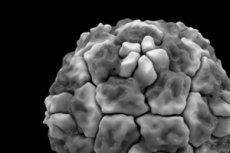New publications
ARVI or flu: which is stronger?
Last reviewed: 02.07.2025

All iLive content is medically reviewed or fact checked to ensure as much factual accuracy as possible.
We have strict sourcing guidelines and only link to reputable media sites, academic research institutions and, whenever possible, medically peer reviewed studies. Note that the numbers in parentheses ([1], [2], etc.) are clickable links to these studies.
If you feel that any of our content is inaccurate, out-of-date, or otherwise questionable, please select it and press Ctrl + Enter.

Rhinovirus infection is considered one of the most common pathogens of acute respiratory diseases. It is noteworthy that rhinovirus activates antiviral protection in the body, thereby preventing the development of seasonal flu in humans. This information was voiced by employees of Yale University.
The massive spread of COVID-19 has attracted most scientists to carefully study all aspects of the possible spread of respiratory viral diseases. Research has also touched upon viral interference - a specific phenomenon of cell immunity to double infection if it is already infected with another virus. The heterologous type of interference suggests that infection with one virus makes the probability of replication of a second virus (no matter whether related or not) completely impossible.
About ten years ago, during the period of mass activity of swine flu H1N1 in Mexico and the United States, there was no significant wave in European countries. Scientists assume that the pandemic did not happen in Europe, since there was a surge in rhinovirus cases there during the same period.
Scientists from Yale University, led by Dr. Foxman, studied the medical records of more than 13,000 patients treated for respiratory infections at New Haven Hospital for three years. It was found that throughout the epidemiological season of circulation of several types of viruses, patients diagnosed with rhinovirus were almost never infected with influenza.
To test the interaction of rhinovirus and influenza infections, specialists laboratory-grown epithelial tissue lining the human respiratory system from stem cells. Incidentally, humans are the main target of respiratory viral infections. Scientists introduced rhinovirus into the resulting cell culture, and three days later – influenza virus. The first introduced infection provoked the development of an interferon reaction in cell cultures on the third day of infection, which caused an approximately 50,000-fold decrease in H1N1 viral RNA on the fifth day after rhinovirus infection. Thus, antiviral protection was activated even before the influenza virus was introduced, so there was no chance for it.
Thus, experts were able to obtain evidence that one respiratory viral infection is capable of blocking infection with other pathogens, as it stimulates antiviral protection on the mucous tissue of the respiratory system. The obtained results indicate that the features of viral interference can have a significant impact on the epidemic situation. And this fact must be taken into account when thinking about the scale of measures regarding the seasonal spread of influenza simultaneously with the ongoing pandemic situation around COVID-19.
The information is presented on the page of the medical journal The Lancet
